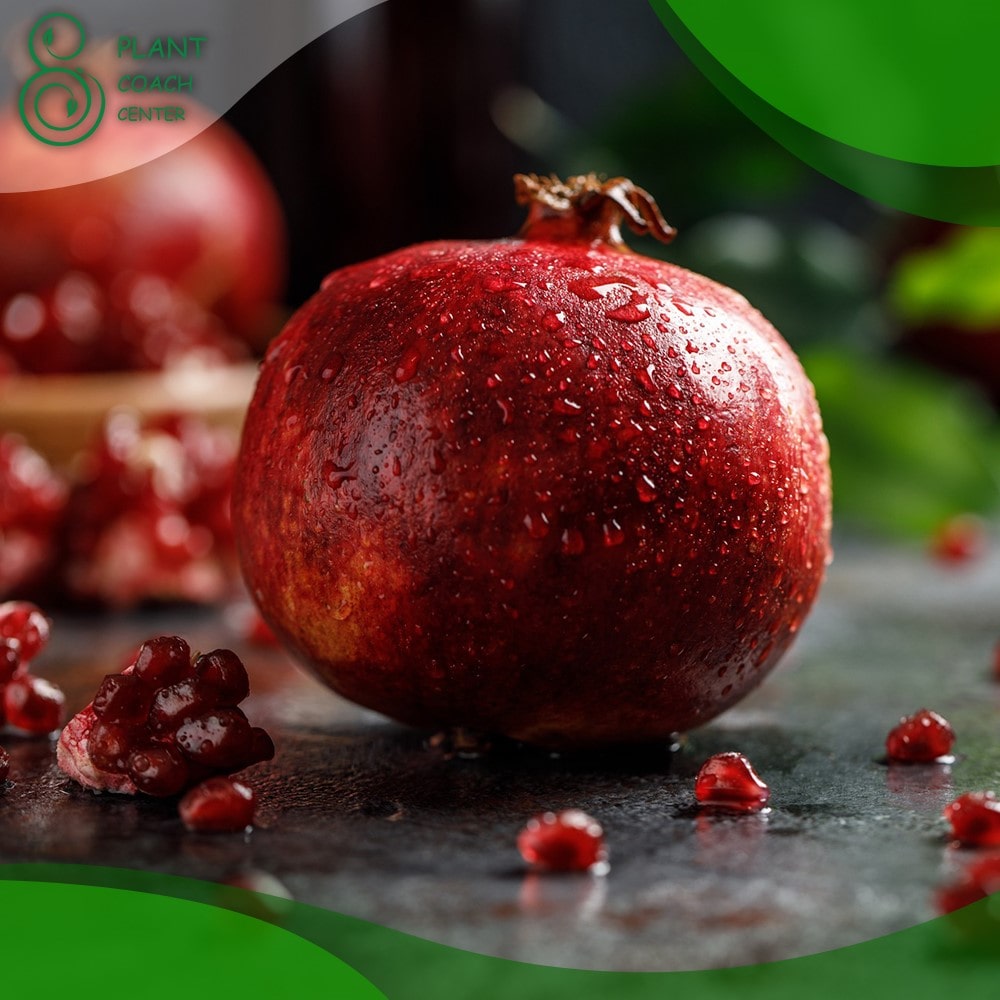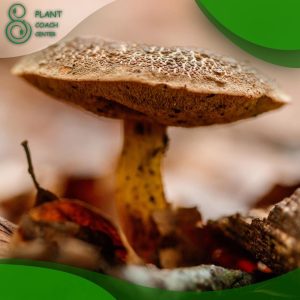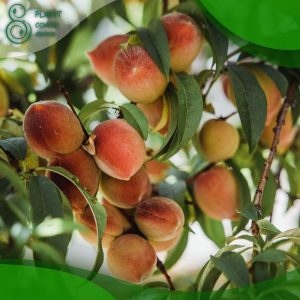Introduction
Welcome to the intriguing world of pomegranates! This comprehensive guide, brought to you by PlantCoachCenter.com, will teach you everything you need to know about how pomegranates grow. So, let’s dive in, shall we?
The Origins of the Pomegranate
The pomegranate, known scientifically as Punica granatum, is a fruit-bearing deciduous shrub or small tree that originated in the region spanning modern-day Iran to northern India. Today, it’s grown worldwide for its fruit crop, and as ornamental trees and shrubs in parks and gardens.
Understanding Pomegranate Plant Biology
The Pomegranate Tree
A mature pomegranate tree can grow anywhere from 16 to 33 feet (5 to 10 meters) tall. The branches are stiff, spiny, and often possess long thorns. The leaves are glossy, narrow, and lance-shaped, providing a lush green backdrop to the vibrant flowers and fruits.
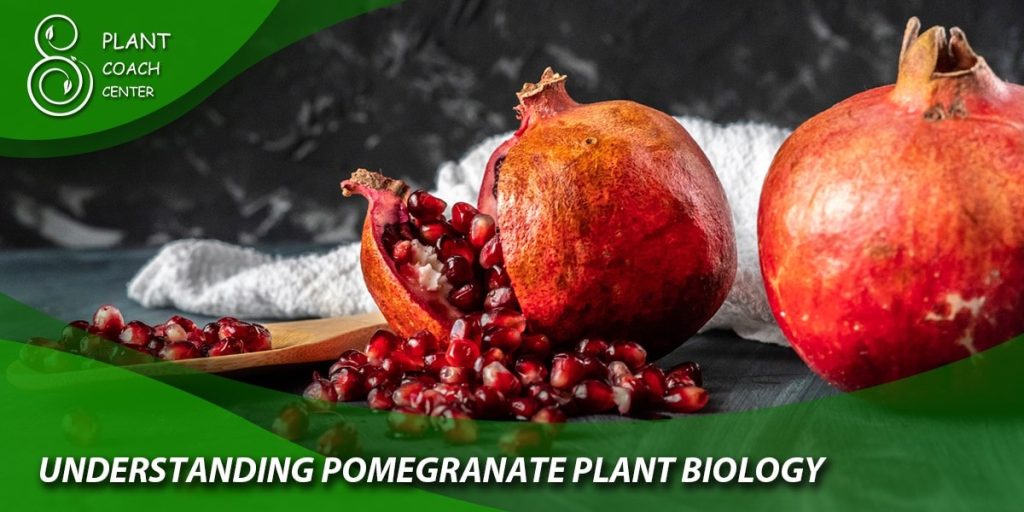
Pomegranate Flowers
The pomegranate tree blooms in the summer, producing stunning orange-red flowers. Each flower has a tubular calyx at the base, which develops into the fruit after pollination.
Pomegranate Fruit Development
After successful pollination, the ovules within the flower develop into seeds, each surrounded by a water-laden pulp known as an aril. These arils and seeds together form the ‘fruit’ that we know and love.
How Do Pomegranates Grow?
From Seed to Sapling
The journey begins with a single seed. When planted and cared for under the right conditions, this seed germinates and grows into a sapling.
The Growth Process
As the sapling matures, it develops a sturdy trunk and branching stems. The tree then starts to produce flowers, which, upon pollination, give way to the fruit.
Fruit Formation and Maturation
After pollination, the flowers’ ovaries swell and expand into a round fruit, filled with juicy seeds. It takes about 6 to 7 months for the fruit to fully mature.
Ideal Conditions for Growing Pomegranates
Climate
Pomegranates prefer a semi-arid mild-temperate to subtropical climate and are naturally adapted to regions with cool winters and hot summers.
Soil
They are highly adaptable and can grow in a wide range of soils. However, deep, loamy soil with good drainage yields the best results.
Watering Needs
While pomegranates are drought-tolerant, regular watering helps ensure a healthy and productive tree.
Pomegranates: Beyond the Orchard
Nutritional Value
Pomegranates are a rich source of fiber, vitamin C, vitamin K, and potassium. Plus, they’re packed with antioxidants that help protect the body from free radicals and inflammation.
Uses in Cooking
From salads to desserts to cocktails, pomegranates add a burst of flavor and color to a wide variety of dishes.
Medicinal Applications
Historically, pomegranates have been used in traditional medicine for their potential health benefits, including reducing inflammation and treating digestive disorders.
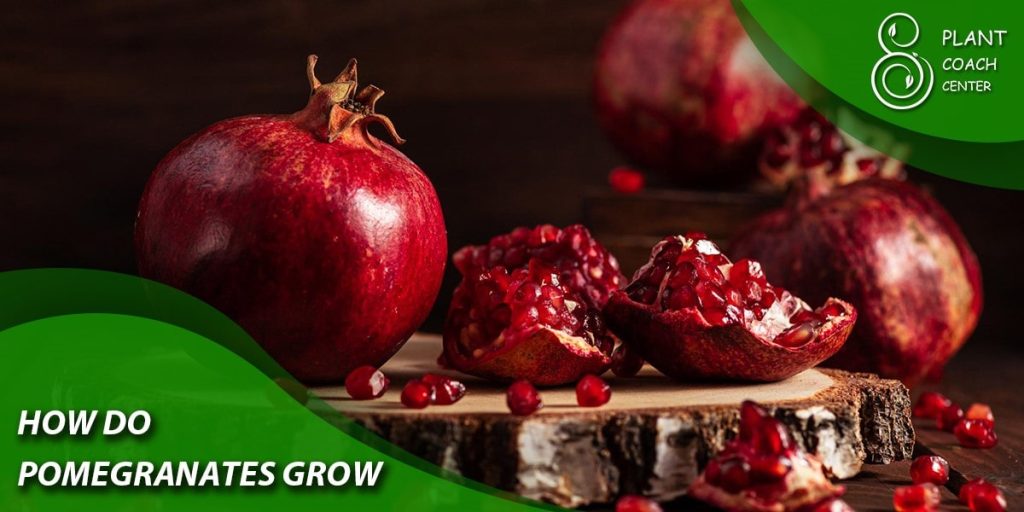
Common Mistakes People Make When Growing Pomegranates
Pomegranates are relatively easy to grow and care for, but like any plant, certain mistakes can hinder their growth and productivity. Let’s uncover some common blunders people often make when growing pomegranates.
1. Planting in Poorly Drained Soil: Pomegranates prefer well-drained soil. Planting them in areas where water tends to collect can lead to root rot and other fungal diseases. If your garden has heavy clay soil, consider amending it with organic matter to improve its structure and drainage.
2. Overwatering: While pomegranates need regular watering, especially during dry periods, they are also quite drought-tolerant. Overwatering can lead to waterlogged roots and diseases. It’s best to water deeply but infrequently, allowing the soil to dry out slightly between watering.
3. Under or Over-Fertilizing: Pomegranates need balanced nutrition to grow and produce fruit. However, both under-fertilizing and over-fertilizing can cause problems. Under-fertilizing can lead to poor growth and low fruit yield, while over-fertilizing can cause lush foliage growth at the expense of fruit production.
4. Ignoring Pruning Needs: Pruning helps maintain the size and shape of your pomegranate tree, encourages better fruit production, and allows better light penetration and air circulation, reducing the risk of diseases. Ignoring the pruning needs of your pomegranate tree can lead to a dense and disordered growth habit and decreased fruit yield.
5. Neglecting Pests and Diseases: Pomegranate trees can be affected by various pests and diseases like aphids, whiteflies, leaf-footed bugs, and fungal diseases. Neglecting these issues can lead to significant damage to your tree and a reduced fruit yield. Regular monitoring and timely intervention are necessary to keep these threats in check.
6. Harvesting at the Wrong Time: Harvesting pomegranates at the right time is crucial for getting the best flavor and nutritional value. Pomegranates don’t continue to ripen after they’re picked, so harvesting too early can lead to sour, underdeveloped fruit. Conversely, if left on the tree too long, the fruit can become overripe and burst open.
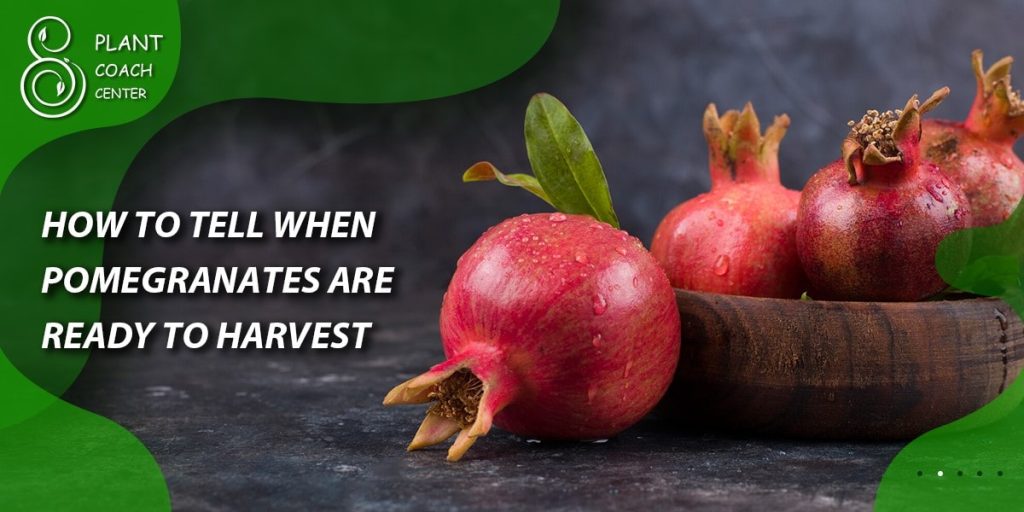
How to Tell When Pomegranates Are Ready to Harvest
Harvesting pomegranates at the right time is crucial to enjoy their sweet, tart flavor. Here are some signs that indicate your pomegranates are ready for harvest.
1. Change in Color: One of the most obvious signs that a pomegranate is ready to harvest is a change in its skin color. A ripe pomegranate typically has a deep, glossy red or pink-red color. However, it’s important to note that the exact color can vary depending on the variety of pomegranate.
2. Size and Shape: Mature pomegranates usually have a round shape and reach about 2-5 inches in diameter, similar to the size of a large orange or grapefruit. If the fruit has reached its typical size, it may be ready for harvesting.
3. Skin Texture: The skin of a ripe pomegranate becomes somewhat hard and the fruit sounds metallic when you tap it lightly. The skin should be tight and glossy, but not cracked (although some varieties may slightly crack when fully ripe).

4. Time since Flowering: Pomegranates are typically ready to harvest approximately 6 to 7 months after the flowers have been pollinated. This usually falls in late summer or early fall for most climates, but can vary depending on your local growing conditions.
5. Taste Test: The most reliable way to check if a pomegranate is ready to harvest is by tasting it. Choose one pomegranate from your tree, cut it open, and taste the arils (the juice-filled sacs around the seeds). They should be juicy and sweet-tart, with a color that ranges from pink to deep red.
Conclusion
Growing pomegranates can be a rewarding experience, offering both aesthetic and culinary delights. Understanding how pomegranates grow helps us appreciate the complexities of these wonderful plants and the delicious fruit they provide. At PlantCoachCenter.com, we’re here to guide you on your horticulture journey. Happy planting!
How long does it take for a pomegranate tree to bear fruit?
Typically, a pomegranate tree begins to bear fruit about 2 to 3 years after planting.
Can pomegranates grow in pots?
Yes, pomegranates can grow in pots, but they may not grow as large or bear as much fruit as those grown in the ground.
What is the best time to plant pomegranate seeds?
The best time to plant pomegranate seeds is in early spring.
How should I water my pomegranate tree?
Pomegranates prefer deep, infrequent watering as opposed to frequent, shallow watering.
How do I protect my pomegranate tree from pests and diseases?
Regular monitoring, proper watering, and pruning can help protect your pomegranate tree from pests and diseases.
When and how should I prune my pomegranate tree?
The best time to prune a pomegranate tree is in late winter or early spring, before new growth begins.


